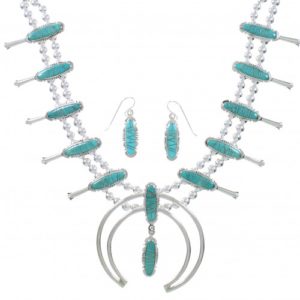
One of the oldest silversmith techniques in recorded history. The inlay process involves working metal fragments into other metals to set design or pattern into the piece and achieve a true work of art. This could be a beautiful floral inlay in an ornate sword or symbols in silver jewelry.
The Native American tribes of Northern American learned the skill from the Spanish in the 19th century and soon began creating their own pieces that looked drastically different than the ones they had learned. Over time, the Navajo taught other tribes across the Southwest through the necessity of trade and those tribes developed their own way of creating this now timeless design.
In particular, the Zuni, who learned the craft from the Navajo, became masters of this process. While the Navajo focused completely on stone-cutting with their silver, the Zuni took more of an eclectic approach, trying to master both in an attempt to create a more well-balanced piece of jewelry for trade. The result is that Zuni squash blossom necklaces use smaller proportions with their silver and stones.
This inlay technique is common among Southwestern tribes and, more specifically, the Zuni. The method of molding metal into metal to produce their designs and symbols comes through brilliantly in these pieces.
The idea is to create a necklace that resembles the squash blossom flower, typically featuring shapes to symbolize flowing petals on the sides and the main flower pendant that is displayed largely at the bottom of the piece.
The result of inlay squash blossom necklaces is truly astounding, achieving a high level of detail in the metal (usually silver) in a way that most other tribes just can’t accomplish through their tribe-specific techniques.
Squash blossom necklaces are already elegant by their nature, but using the inlay technique really takes them to a whole new level.
